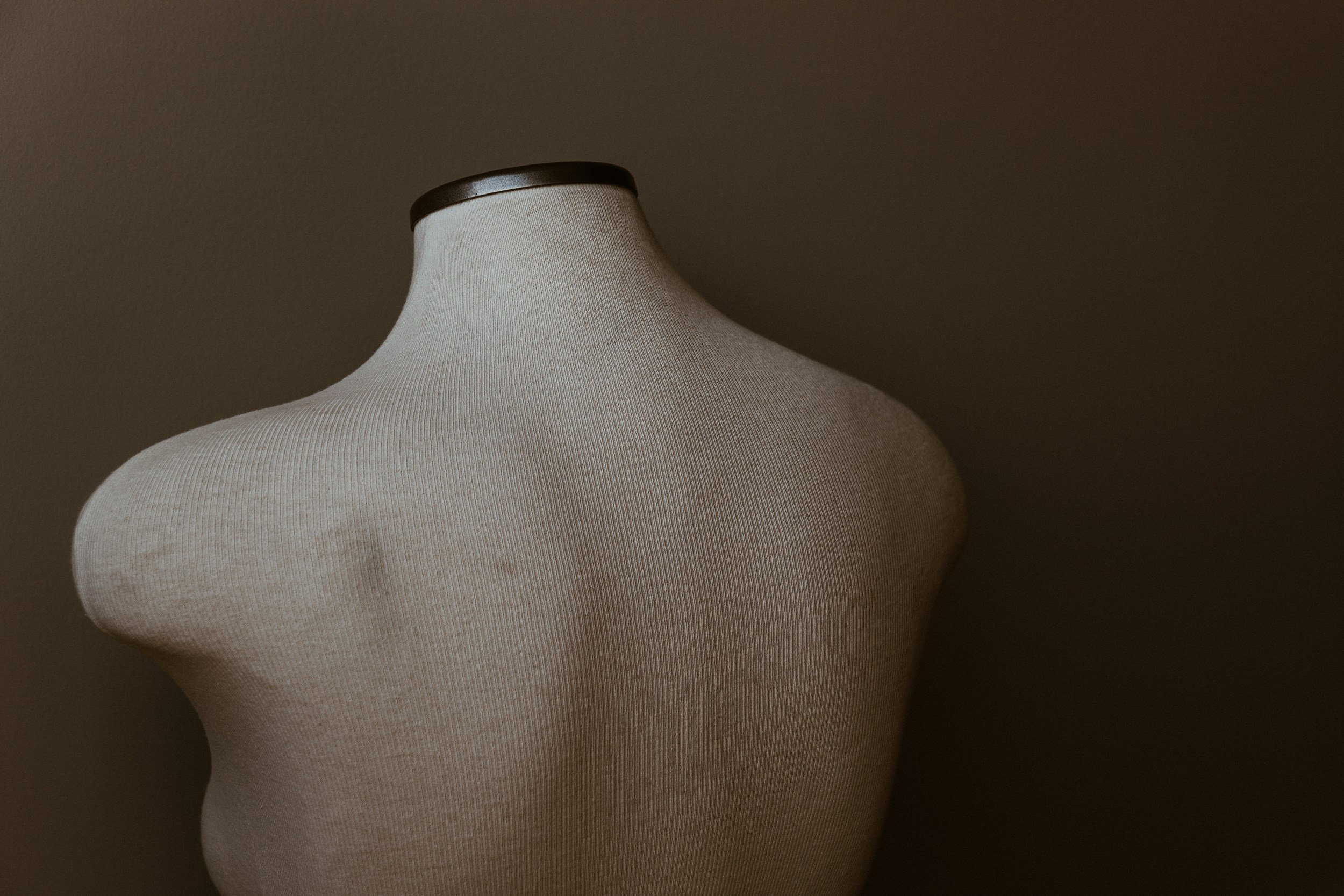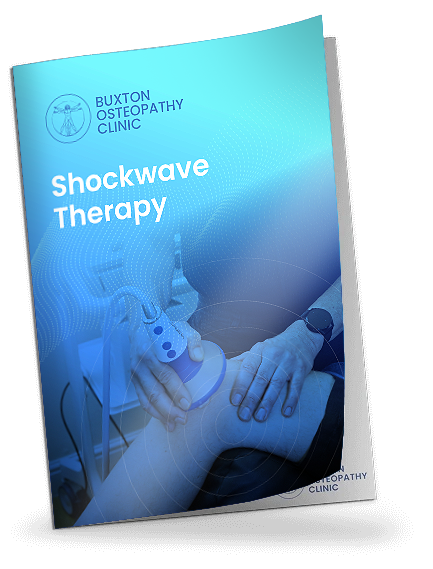The shoulder has an optimum kinematic (meaning the property of motion) lifespan of roughly 40 years. After this point in time we begin to see degenerative changes. This can lead to shoulder pain & rotator cuff injuries.The key anatomical issue with ageing in the shoulder is typically the rotator cuff.

Shoulder pain can make even simple tasks — lifting, dressing, or reaching overhead — feel impossible. At Buxton & Bakewell Osteopathy Clinic, we specialise in diagnosing and treating shoulder pain and rotator cuff injuries with expert precision and care. Whether your discomfort stems from muscle strain, tendon inflammation, or poor posture, our experienced osteopaths use advanced techniques to restore natural movement and lasting relief.
Using the latest innovations such as Shockwave Therapy and tailored rehabilitation, we help you recover faster and prevent future flare-ups. If you’re searching for trusted shoulder pain specialists in Buxton or Bakewell, our team offers professional, evidence-based care designed to get you moving confidently again.
The Evolution of the Shoulder Joint and Rotator Cuff
Early man was vulnerable as it had a distinct lack of any physical advantages when compared to any other self-respecting predator of the day. We did not come equipped with fangs, venom, claws, antlers, horns or tusks, speed, strength, camouflage or even a thick hide (unless applied as a metaphor) .
We therefore needed to equip ourselves with weapons and to do this we needed the ability to throw! Our ability to throw was in evolutionary terms a really good idea! This helped shaped the evolution of our arm, shoulder joint and torso.

The diagram above demonstrates our evolutionary shift by comparing the shoulder of a chimpanzee on the left of each picture, as we look at the page, and that of the human shoulder on the right. What we can see is that the human shoulder has become much more horizontal. The pictures on the right do not represent an inverted roast chicken, but the shoulder blade, or scapula, from a posterior view (i.e. from behind) .
This neatly portrays how the scapula has effectively rotated almost 45 degrees from chimpanzee anatomy to that of a human. Clearly there is no longer a requirement for us to swing from trees (brachiate) as we have evolved to become bipedal. Our design is therefore better matched to our environment and ideal for manipulating tools and throwing with speed and accuracy.
Interestingly it has been observed that one of our early ancestors, Australopithecus afarensis, exhibited a mixture of both ape and human features in shoulder design. This is because the species, although bipedal, engaged in both tree climbing and wielding basic stone tools. The orientating of its scapula was unsurprisingly precisely midway between chimpanzee and human.
However, although we do have the right to be incredibly pleased with ourselves because of the unique ability to throw, we have unfortunately inherited a natural mechanical disadvantage. Our shoulders are not very stable above 90 degrees essentially because of the orientation of the scapula as mentioned above. Anything beyond this point and it begins to become increasingly compromised making the shoulder susceptible to injury.
Unfortunately, the shoulder has an optimum kinematic (meaning the property of motion) lifespan of roughly 40 years. Indeed, after this point in time we begin to see degenerative changes. Two score years (a score being twenty years) was probably our original intended evolutionary lifespan but we now view that as barely middle aged. The key anatomical issue with ageing in the shoulder is typically the rotator cuff.
The rotator cuff provides stabilization to the shoulder joint and contributes to both mobility and strength. As such it has a great deal of work to do especially when we perform overhead movements.
Some studies suggest that 40% of people over 50 years old will have small rotator cuff tears although this does not necessarily mean that they are symptomatic. The incidence rate increases with age with rates as high as 80% in those older than 80 years old. Not only is there an increased prevalence of rotator cuff tears with ageing, but here is a higher rate of large and extensive tears, which are less amenable to surgical repair.
Obviously, with the passage of time this is inevitable but frequent overhead activities, no matter what age we are, also hold the shoulder to full account.
Shoulder Pain & Rotator Cuff Injuries & Racket Sports, Baseball and Swimming
Perhaps the greatest illustration of the balance between shoulder mobility and stability occurs during sporting activities. There are many sports to choose from that use overhead movements as a key component especially racket sports.
The power generated in racket sports however is generated from the whole body rather than the shoulder. Surprisingly in tennis, studies suggest only 21% of the power generated during a serve comes specifically from the shoulder joint. Approximately 54% of the power generated comes from the trunk and legs, 15% from the elbow and 10% the wrist.

What this does imply, is that for someone like Andy Murray who has famously had a protracted hip issue that culminated in an eventual joint replacement, much more force will be required from the shoulder in order to compensate for any lower limb issue. These are the scenarios which often result in shoulder overloading amongst both amateurs and the sporting elite.
Throwing is also a key component in many sports such as baseball, basketball, volleyball and cricket. Cricket of course involves delivering a ball with a straight arm. In cricket, much like tennis, the hand is in essence a high-speed-end effector that happens after power and movement are translated through the heavier body segments such as pelvic, trunk and shoulder movement before ball release. In general volleyball and basketball do not demand the extreme forces of a baseball pitch.
Professional baseball pitchers particularly (think about the action) subject the rotator cuff to huge physiological loads and deliver a ball from an almost static posture (unlike cricket). A study performed by the North American Radiological Society in 2014 demonstrated that even teenager baseball pitchers who throw more than 100 pitches a week inevitably develop rotator cuff tears.

Similarly, another piece of research from 2019 determined that between 2011-15 there were a total of 3019 injuries in major league baseball. The shoulder was the most vulnerable anatomical location for injury representing 17% of all injuries (or 511). The pitcher was most prone to injury and 78% of these injuries were rotator cuff tears!
Another sport often not considered when it comes to overhead shoulder injury is swimming. In contrast with many other sports the legs initiate the propulsive force, but as we know swimmers primarily use their arms to generate forward thrust. Swimming is generally comprised of four different key strokes of varying distances, including freestyle (or crawl), butterfly, backstroke, and breaststroke.

Most strokes are divided into two primary phases referred to as the pull-through and recovery. The pull-through is where propulsion is achieved and is further divided into different phases consisting of the hand entry, the catch, mid-pull, and finish or end pull-through.
A competitive swimmer usually exceeds 4000 strokes for one shoulder in a single workout, making this a common source of shoulder pathology in the sport. Muscle fatigue of the rotator cuff, upper back, and pectoral muscles caused by these vast numbers of repetitive movements often results in microtrauma to the rotator cuff.
Reports of incidence of disabling shoulder pain in competitive swimmers ranges from 27% to 87%. But of course, above and beyond what we do at home, it is not just sporting activity that demands overhead movements. There is the small matter of our occupation setting.
Shoulder Pain & Rotator Cuff Injuries and Our Occupation
Unsurprisingly working above shoulder level has also been found to be significantly associated with disabling shoulder pain. One study that acts as a good reference point, even if it is 20 years old, was undertaken in Manchester.
This looked at a cross section of several different manual-based occupations involving 775 workers. Occupations varied from working in a supermarket, hospital, department store, packaging factory and Post Office with workers equally spread over different age groups. The five occupational settings were roughly uniformly represented.
Of our 775 subjects 26% (or 196) of them had experienced a one-month period prevalence of disabling shoulder pain. Although the prevalence of shoulder pain was similar across the five occupational settings, a significantly higher proportion of older employees had experienced disabling shoulder symptoms.
What was noticeably obvious is that those workers who spent the longest amount of time working above shoulder height had a much higher prevalence of shoulder pain, and in fact they had a two-fold increase in shoulder injuries. The risk of shoulder pain also increased significantly with duration of manual handling with one hand and carrying weights on one shoulder, with approximately a doubling of risk. These finding are well support by other studies.
If you’re struggling with ongoing shoulder pain or a rotator cuff injury, don’t let it limit your daily life. At Buxton & Bakewell Osteopathy Clinic, our team combines decades of experience with advanced treatments like Shockwave Therapy, rehabilitation exercises, and gentle osteopathic care to target the root cause of your pain — not just the symptoms. We take pride in helping our patients across Buxton, Bakewell, and Derbyshire regain mobility, strength, and confidence
Q1: What causes shoulder pain and rotator cuff injuries?
A1: Common causes include overuse, poor posture, tendon inflammation, and minor tears in the rotator cuff muscles.
Q2: How can osteopathy help Shoulder Pain & Rotator Cuff Injuries?
A2: Osteopathy improves mobility, reduces inflammation, and restores shoulder function through hands-on therapy and advanced treatments.
Q3: Do you offer advanced treatments for Shoulder Pain & Rotator Cuff Injuries?
A3: Yes — our clinics in Buxton and Bakewell use Shockwave Therapy and rehabilitation programmes for faster, longer-lasting results.






